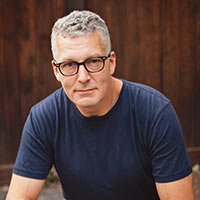Women Breaking Barriers in Earth Science and Environmental Engineering
OnlineEducation.com conducted interviews with numerous experts in the Earth sciences, environmental engineering, and several related disciplines to hear their stories and gather their insights. These leaders in their fields offer diverse perspectives on challenges facing women in the Earth sciences and environmental engineering, paths to overcoming various barriers, and opportunities for women in the geosciences.
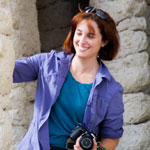 Jessica Ball, PhD Dr. Jessica Ball is a volcanologist and a Mendenhall Postdoctoral Fellow at the US Geological Survey (USGS) in Menlo Park, CA. Previously she worked as a Senior Policy Fellow at the Geological Society of America in Washington DC. Dr. Ball earned her PhD in Geology from the State University of New York College at Buffalo (SUNY Buffalo), and she blogs about Earth and environmental science at Magma Cum Laude, which is part of the American Geophysical Union’s Geoblogosphere.
Jessica Ball, PhD Dr. Jessica Ball is a volcanologist and a Mendenhall Postdoctoral Fellow at the US Geological Survey (USGS) in Menlo Park, CA. Previously she worked as a Senior Policy Fellow at the Geological Society of America in Washington DC. Dr. Ball earned her PhD in Geology from the State University of New York College at Buffalo (SUNY Buffalo), and she blogs about Earth and environmental science at Magma Cum Laude, which is part of the American Geophysical Union’s Geoblogosphere.
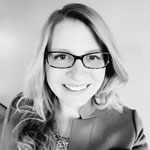 Rebecca Barnes, PhD Dr. Rebecca Barnes is an Assistant Professor in the Environmental Program at Colorado College who specializes in biogeochemistry and ecosystem ecology. She is on the leadership board of the Earth Science Women’s Network (ESWN) and is part of a National Science Foundation (NSF) project to investigate the impact of mentorship and leadership development programs on the recruitment and retention of women in the geosciences.
Rebecca Barnes, PhD Dr. Rebecca Barnes is an Assistant Professor in the Environmental Program at Colorado College who specializes in biogeochemistry and ecosystem ecology. She is on the leadership board of the Earth Science Women’s Network (ESWN) and is part of a National Science Foundation (NSF) project to investigate the impact of mentorship and leadership development programs on the recruitment and retention of women in the geosciences.
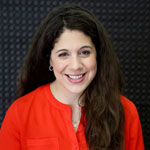 Lisa Colosi-Peterson, PhD Dr. Lisa Colosi-Peterson is an environmental engineer and an Assistant Professor in the Department of Civil and Environmental Engineering at the University of Virginia (UVA). She leads the Environmental Biochemistry Lab at UVA, where her team conducts research into waterborne contaminants and wastewater treatment processes. Dr. Colosi-Peterson holds a PhD and an MS in Environmental Engineering from the University of Michigan.
Lisa Colosi-Peterson, PhD Dr. Lisa Colosi-Peterson is an environmental engineer and an Assistant Professor in the Department of Civil and Environmental Engineering at the University of Virginia (UVA). She leads the Environmental Biochemistry Lab at UVA, where her team conducts research into waterborne contaminants and wastewater treatment processes. Dr. Colosi-Peterson holds a PhD and an MS in Environmental Engineering from the University of Michigan.
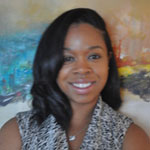 Melanie Harrison Okoro, PhD Dr. Melanie Harrison Okoro is a Water Quality Specialist at the National Oceanographic and Atmospheric Administration’s National Marine Fisheries Service (NMFS). She is active in promoting diversity and inclusion in the geosciences through her leadership work with the Earth Science Women’s Network (ESWN) and the American Geophysical Union (AGU). Dr. Okoro holds a PhD in Marine Estuarine and Environmental Science from the University of Maryland Baltimore County.
Melanie Harrison Okoro, PhD Dr. Melanie Harrison Okoro is a Water Quality Specialist at the National Oceanographic and Atmospheric Administration’s National Marine Fisheries Service (NMFS). She is active in promoting diversity and inclusion in the geosciences through her leadership work with the Earth Science Women’s Network (ESWN) and the American Geophysical Union (AGU). Dr. Okoro holds a PhD in Marine Estuarine and Environmental Science from the University of Maryland Baltimore County.
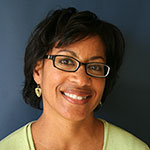 Lisa White, PhD Dr. Lisa White is the Assistant Director for Education and Public Programs at the University of California Museum of Paleontology at UC Berkeley. She spent more than two decades as a Professor of Geology at San Francisco State University (SF State) and, in addition, headed the US Geological Survey’s Minority Participation in the Earth Sciences program and chaired the Geological Society of America’s Committee on Minorities and Women in the Geosciences.
Lisa White, PhD Dr. Lisa White is the Assistant Director for Education and Public Programs at the University of California Museum of Paleontology at UC Berkeley. She spent more than two decades as a Professor of Geology at San Francisco State University (SF State) and, in addition, headed the US Geological Survey’s Minority Participation in the Earth Sciences program and chaired the Geological Society of America’s Committee on Minorities and Women in the Geosciences.
Facing the Facts: Women and Stereotypes in Earth Science and Environmental Engineering
Stereotypes die hard. A broad range of people – men and women – work in the field of geology and paleontology but the old-school image of a guy with a pick and a shovel heading out on a dig is very entrenched. (Dr. Lisa White)
In 2014, University of Wyoming geology and botany professor Dr. Ellen D. Currano set out to capture images of fellow female geoscientists out in the field with one major twist: each of the dozens of researchers and scientists approached by Currano would don a fake beard for a portrait by photographer Kelsey Vance and documentary footage shot by Lexi Jamieson Marsh.
With funding from the NSF and an educational grant from the Paleontological Society, The Bearded Lady Project: Challenging the Face of Science took shape and took aim at a central paradox in the Earth and environmental sciences. While there are many women currently engaged in important research and fieldwork across the spectrum of environmental science and engineering specializations, they remain underrepresented in what has traditionally been a male-dominated STEM field. More to the point, when people think of a geologist, an Earth scientist, or an environmental engineer, they’re often picturing a man, whether it’s a man in a white lab coat, a man in a rumpled tweed jacket, or a man with a wooly beard.
“Many people still see the typical geoscientist as a big burly outdoorsy type of person working in the field at a remote site,” explains Dr. Lisa White, a geologist who heads up the educational outreach programs for the University of California Museum of Paleontology. “Those images are strong and impactful.”
Dr. Jessica Ball, a volcanologist with US Geological Survey, took note of another subtle yet pervasive cultural bias in “The Clothes Don’t Make the Scientist,” a 2015 post on her Magma Cum Laude blog. Referencing research on media representations of female scientists, she explained, “I see an article about some new discovery, the author’s gone and interviewed the scientist who made it, and if it’s a woman, for some unfathomable reason I have to slog through a whole paragraph of nonsense about her blouse and her haircut. As a reader, I find it insulting to both me and the person being interviewed.”
“As a female scientist you often find yourself referred to by the way you look,” admits Dr. Rebecca Barnes, an Assistant Professor and lead researcher in the Environmental Program at Colorado College. “For example, I’ve heard myself described many times as the ‘super chatty blonde scientist.’ It’s happened my entire life, from professors and from colleagues. Often it’s jokey. Sometimes it might be slightly predatory. I have no idea: it’s just part of my life.”
To illustrate the chilling effect this could have on an aspiring female scientist or engineer, Barnes recalls a backhanded compliment she received from an older male scientist at her first professional conference when she was a Yale School of Forestry PhD student. She’d just given him a “3-minute spiel” on her research and he commented, “You are way smarter than you look. You should consider dying your hair.”
A Look at the Numbers for Women in Earth Science and Environmental Engineering
Barnes’ experiences, and the observations of Ball and White, offer snapshots from the frontlines of a historically male-dominated field that is evolving to accommodate a greater number of women. Drawing on data from the National Center for Education Statistics, the non-profit research organization Catalyst reported in December of 2016 that women had begun to outpace men among degree earners in the broad category of “life sciences.” However, the same report notes that women make up only 27.5% of professionals employed as environmental scientists and geoscientists. That is slightly above the 25%-or-less threshold for professions/occupations that the Bureau of Labor Statistics (BLS) defines as “nontraditional” or “male-dominated.”
The American Geosciences Institute (AGI) offers a more detailed and less optimistic breakdown of the landscape for women in Earth science and environmental engineering professions.
AGI Breakdown of Women in Geoscience-Related Careers
AGI breakdown of the percentage of women working in individual geoscience-related fields:
- Environmental Engineers – 23%
- Geoscientists – 21%
- Atmospheric and Space Scientists – 15%
- Environmental Scientists – 13%
- Petroleum Engineers – 6%
What’s clear is that there are some areas of science and engineering that are more attractive and welcoming to women than others. The National Girls Collaborative Project (NGCP) looked at NSF data from 2013 and determined that women had earned slightly more than 50% of all science and engineering bachelor’s degrees. That study then concluded that, “Female scientists and engineers are concentrated in different occupations than are men, with relatively high shares of women in the social sciences (62%) and biological, agricultural, and environmental life sciences (48%) and relatively low shares in engineering (15%) and computer and mathematical sciences (25%).”
NGCP Breakdown of Women in Engineering Careers
The NGCP breakdown found significantly more women working in environmental engineering:
- 35.2% of chemists are women
- 33.8% of environmental engineers are women
- 22.7% of chemical engineers are women
- 17.5% of civil, architectural, and sanitary engineers are women
- 17.1% of industrial engineers are women
- 11.1% of physicists and astronomers are women
- 10.7% of electrical or computer hardware engineers are women
- 7.9% of mechanical engineers are women
Similar numbers and data points have been reported by different organizations. For example, the American Association of University Women (AAUW) analyzed BLS workforce data from 2009 and found that women constituted 29.3% of environmental scientists, which was slightly less than chemists and materials scientists (33.1%), but significantly more than chemical engineers (13.1%) and civil engineers (10.4%).
What puzzles many people about these numbers is the striking disparity between the number of women earning advanced degrees in environmental science and engineering, and the percentage of professionals in these fields who are women. According to a 2015 report by the AGI (Status of Recent Geoscience Graduates), “female master’s graduates overtook the percentage of male master’s graduates by 10%,” while male doctoral graduates only exceeded female doctoral graduate by 6%.
The delta between the number of women earning degrees in environmental science and engineering, and the number of women actually employed in those fields may account for another crucial area where the numbers are skewed. At the university level it is estimated that only 20% of Earth science faculty members at PhD-granting research universities are women. It’s a data point that has a lot of people in the field wondering: where are all the women?
“We consider this question often,” admits Dr. Lisa White, who spent over two decades on the faculty at SF State. “If we use a pyramid analogy, the bottom of the pyramid is filled with many women in undergraduate programs. There are also a significant number of women in graduate programs. Where do they go from here? Are they not getting jobs at certain companies or in academia? Are the available jobs not attractive to women candidates? Old-boy networks persist in the industry and in universities. With the number of female majors in the geosciences you’d expect women would be more visible in faculty positions. At SF State there were two of us out of twelve faculty members when I arrived, and four by the time I left. It’s a slow uptick, but it is happening.”
As an undergraduate geology major at Oberlin College, Rebecca Barnes doesn’t remember any female faculty in the department. “As a graduate student,” she stresses, “it became increasingly clear to me that I’d chosen a male-dominated field. I had the realization that I didn’t have any female professors and I wasn’t interacting with women as much as I had as an undergraduate.”
“What’s interesting,” Barnes observes, “is that there are actually a lot of female students in many areas of natural science. The problem is that many of them don’t go on to have careers in the field. The pipeline is ‘leaky,’ as they say.”
What is Earth Science and Environmental Engineering?: Redefining the Field for the 21st Century
If you’re an environmental scientist right now, it’s almost impossible to ignore the effects of climate change and warming because it’s so pervasive. (Dr. Rebecca Barnes)
Environmental science and environmental engineering are interdisciplinary fields that have evolved fairly rapidly over the past fifty years, as pollution, sustainability, and the overall health of the ecosystem have become more urgent concerns. Creating broader awareness about opportunities for meaningful research and practical innovation in these areas may be one of the keys to bringing more women into the field. It’s something Lisa Colosi-Peterson emphasizes in her mentoring of students in the engineering program at UVA, and that she thinks carries a special resonance for women in the program.
“Have you heard of ‘the ethic of care?’,” she asks. “It comes out of studies into why women find engineering appealing. Most frequently, they’re looking for fields where they feel like they can help take care of people and, traditionally, those have been biomedical and environmental engineering majors. At UVA, you can see that the highest enrollment as a percentage of women in a STEM field is biomedical, and the environmental side of civil/environmental engineering is right behind them.”
That may explain why environmental engineering boasts a higher percentage of women employed than the more traditionally male-dominated fields from which it emerged: civil and chemical engineering. Environmental engineers use the tools of civil and chemical engineering to investigate and solve problems in areas like air and water quality and to mitigate pollution and environmental contamination.
“My interest has always been rooted in the desire to take care of people, and my personal sense of investment in this field has really evolved as I’ve had children,” Colosi-Peterson explains. “Now it’s not just an interesting problem of taking care of other people; it’s my own family. In my courses I interject all sorts of things about motivations for wanting to do a good job cleaning water and wastewater by saying, ‘Now remember, we’re leaving the planet to our children and grandchildren, and these things are important because they’re so persistent in the environment.’”
Earth and environmental science, or the geosciences, represent a broad area of research and discovery, encompassing entrenched disciplines like geology, paleontology, and volcanology, as well as newer fields of study like ecology, oceanography, and air, water, and soil chemistry. “I’ve seen a shift in many geoscience degree programs, from a classic rock-centric focus to programs that are more embracing of Earth systems,” observes Lisa White. “Women and men in my networks are very optimistic about the prospects for broader and more cross-disciplinary initiatives that should help bring more women into the field. We continue to battle the perception people have that geoscience is just about digging up rocks. We need to spread the word that it’s more than rocks and the solid Earth; the field includes climate, oceans, and environmental change.”
Finding a Foothold: Pathways to a Career in Earth Science and Environmental Engineering for Women
I think women become stronger when they see other women represented in the field, when they get institutional support, and when they’re part of a community. (Dr. Melanie Harrison Okoro)
The experts interviewed for this story agreed that Earth science and environmental engineering are not unique among STEM fields and other traditionally male-dominated professions in terms of the hurdles women must overcome. Their experiences point to structural and attitudinal barriers, particularly in academia, that can become impediments for women pursuing advanced degrees. And their successes are hopeful indicators that these barriers are not insurmountable.
- Melanie Harrison Okoro had the unique experience of being one of the first students invited to attend a PhD program offered by the University of Maryland in Marine Estuarine and Environmental Science, and she didn’t immediately take note of the gender disparity in the field. “There are structural inequalities and biases that affect the potential of women to fulfill their career in the field of environmental science,” she acknowledges. “From prejudicial harassment, to lack of recognition and access to income and resources, to subtle discrimination or work conditions (laboratory or field) – these are only a handful factors that contribute to the disparity, some of which are more difficult to quantify than others.” She adds, “It also important to note these issues are not unique or exclusive to the environmental field.”
- “Many of the most visible senior volcanologists are men and it’s hard to break into the old-boys’ club if you’re a young woman,” admits Jessica Ball, who got her PhD at SUNY Buffalo. “I was fortunate that my advisor was very much a part of a strong network of women in the field. Had I not been able to take advantage of her connections, things might have gone very differently.”
- Lisa Colosi-Peterson knew early on that she wanted to go into engineering. Her father and many of her friends’ parents were engineers at DuPont, near where she grew up in Delaware. But, as she admits, “I actually did not know that environmental engineering was a field when I first started college.” She enrolled in the Agricultural and Biological Engineering program at Cornell and spent a summer learning about wastewater treatment through an internship at DuPont. “After that I was hooked,” she recalls. “I went back to school after that summer and tweaked my approach to completing the curriculum to have much more environmental content.”
- Lisa White came late to the sciences. “I didn’t see myself as a scientist or think science was for me,” she says. “It wasn’t until I was a junior at SF State that I took my first geology class… After my first geology class, the instructor encouraged me to apply for an internship at the US Geological Survey (USGS). Getting mentoring from professional geoscientists and having the hands-on experience sort of sealed the deal for me.”
- Rebecca Barnes was intent on majoring in biology as an undergraduate until she took an oceanography course taught by a geologist. She then attended a geology field camp, which is becoming more commonplace in undergraduate programs. “What I loved about geology was learning how to walk around a landscape and recreate the history of that space over millions of years. It was kind of like a super power… It made me feel like a scientist.”
While each person finds his or her own way into environmental science and engineering, there are some common threads that link the formative experiences of the experts interviewed for this piece. First and foremost, they were not deterred when they became aware that women were not well represented in fields like geology, volcanology, engineering, and oceanography. In addition, the experience of “feeling like a scientist,” as Dr. Barnes describes it, or having a sense of “inclusion,” as Okoro emphasizes, played an important role. There’s no template for how to make this happen, but there are several ways to help foster the feeling of belonging in a field.
You Belong Here: Feeling at Home in the Field
Our experts recommend starting to build a network of peers and mentors while still in school:
- Find a faculty mentor and seek out his or her advice
- Attend internships and/or field camps
- Seek out networks of women who work in the field
Barriers for Women in Earth Science and Environmental Engineering
Many gender issues, such as sexual harassment, have up to this point largely not been dealt with because people allow them to be brushed under the rug. It’s well past time for the whisper networks that women have previously used to warn others about problems with peers or superiors or working conditions to become open, loud conversations. (Dr. Jessica Ball)
As we’ve seen, there are a number of initial barriers that may discourage women from pursuing a career in the Earth sciences and environmental engineering. They include:
- Popular representations of Earth scientists and environmental engineers that skew heavily male
- Lack of female faculty in geoscience and environmental engineering departments
- Difficulty finding mentors and professional role models in industry and academic positions
- Lack of awareness about the potential careers and areas of study within the Earth sciences and environmental engineering
There are also deeper impediments that keep women from pursuing advanced degrees and careers in these fields. Sexual harassment and entrenched gender biases present obvious problems, although the solutions remain somewhat elusive. Jessica Ball cites a 2014 story from Nature magazine that details a survey of anthropologists who faced harassment in the field, and in July of 2016 The Atlantic ran a cover story titled “How Women Are Harassed out of Science.”
“I know other women who became discouraged from getting or keeping field-based jobs because of the potential for harassment – often from their co-workers,” says Ball. “Geoscientists work in remote and dangerous situations, and these are often more hostile for women than men.”
Even in the absence of outright harassment, there can be other signposts that may deter women. Rebecca Barnes points to a combination of implicit biases and other factors that can be discouraging for women. “A professor might require students on a research project to sleep in their cars by a site so that they can be up at five in the morning to take samples,” she explains. “Unfortunately, male and female students are taking very different risks by doing that. In a lab setting, it may just be little remarks that people make, or the fact that there’s an inappropriate calendar hanging on the wall. All of this tiny stuff may point to the fact that you don’t belong.”
In her work as a volcanologist for the USGS, Jessica Ball has not had any unpleasant field experiences. “Up to this point, two of my four scientific supervisors have been women, and the men were both used to mixed-gender field excursions, so it’s not been a big problem for me,” she offers. However, she says that she and her female colleagues “take it on ourselves to provide our own accommodations when we can. When we can’t, we simply have to make noise about the situation until it gets remedied. Government organizations like mine follow a set of professional standards that mean we’re entitled to private, individual housing no matter what, unless there’s extremely limited funding.”
Challenges for Women in Earth Science and Environmental Engineering
Our experts acknowledged several challenges faced by women in the field:
- Harassment in more informal lab and fieldwork settings
- Implicit and entrenched biases about women’s ability to do the work
- Studies that show women may be rated lower in job interviews
- Lack of proper accommodations in fieldwork settings
- Outdated tenure and maternity-leave policies that may make it difficult for women who are starting families
- Competition for upper-level faculty and industry positions
In academic settings, the implicit biases and “inconveniences” may be more subtle, but no less daunting. This may be especially true for women who are starting families. “When I entered the professoriate in the early ‘90s,” Lisa White recalls, “there was little to no policy on maternity leave and the impact the leave can have on the tenure clock. The attitude was, ‘We’ll take it on a case-by-case basis.’” White says she’s seen some improvement in these areas, including more standardized maternity and parental leave policies, and provisions that allow women the flexibility to add an extra year to their tenure clock.
There is a general sense among the experts interviewed for this story that many of these barriers are part of what Ball calls a “holdover effect.” She continues, “I haven’t encountered blatant examples myself, but I know several women who were told by men, usually men who held power over their careers, that they weren’t suited for geoscience jobs because they were women. Even unconscious bias plays a part: there are studies that say that men and women will rate women lower in job interviews (National Academy of Science; 2012), and that they will promote women in different ways in recommendation letters (Nature Geoscience; 2016).”
Citing the disparity between the number of women earning degrees and the percentage of women in the workforces, Lisa Colosi-Peterson invokes what engineers call the “plug-flow problem.” As she explains it, “People graduating with bachelor’s degrees in engineering are going into the workforce at the bottom of the pyramid. They’ve got to wait behind the people who have more senior positions.”
While there is some evidence that attitudinal barriers are eroding, senior research positions and tenure-track faculty appointments are relatively scarce. Women graduating with degrees in environmental science and engineering are entering a competitive field. Science and engineering programs are challenging, even at the bachelor’s degree level. But, as Colosi-Peterson likes to tell her students, it’s worth the effort: “You work hard for four years and then you reap the rewards when you get to pick a job that’s meaningful, stimulating, and – to be perfectly frank – gives you, as a young woman, the means to be financially independent. That’s something our mothers, grandmothers, great-grandmothers didn’t have access to.”
Breaking Through: Advice from the Experts on Overcoming the Barriers
To help overcome barriers young women commonly encounter, we hope these women entering the field see other women who have achieved success. There are women doing amazing things in the geosciences, setting trends in the field, and coming up with new creative solutions to traditional impediments to success. It is important to raise awareness about biases, barriers, and the ways that we’ve unintentionally made it difficult for women at times. But it’s also important to point out how far we’ve advanced. (Dr. Lisa White)
“With the environmental problems we’re facing, we need everyone’s best ideas,” says Lisa Colosi-Peterson. “To me, it’s so self-evident that better integration and representation would enrich the quality of the field. You see the stats; they’re so sobering. We’re not fully leveraging a tremendous part of our workforce.”
Like many of her colleagues, Colosi-Peterson sees mentoring and guidance as key to bringing more women into environmental science and engineering. While much of this happens at the institutional level – at colleges and universities, within science and engineering departments – there are also regional and national networking organizations that have helped make these fields more welcoming to women. These include the Association for Women Geoscientists (AWG) and the Earth Science Women’s Network (ESWN).
“One of our goals with the ESWN is to make women feel like they belong in the field,” explains Rebecca Barnes, who is on the ESWN leadership board. “If you don’t see yourself in the people who work in a field and who are successful in that field, it may not matter how well you do in a geology class.”
Barnes is particularly encouraged by the kinds of mentoring relationships the ESWN has helped foster. As she explains, “You do not need to have a perfect relationship with your research manager or academic advisor in order to progress as a researcher. They are there to provide feedback on the science. They may also provide feedback on life challenges, but that’s not really their job. And maybe it would be easier if you didn’t expect that from them.”
She continues: “The ESWN provides an open forum for members to post and get answers to all kinds of questions, from teaching strategies to women-specific challenges. For example, there was a long and reoccurring conversation around breastfeeding at professional conferences. Because of that conversation, we now have rooms for that at more conferences. That happened because some of our members who were part of the conversation were also on organizing committees, not because of any formal effort. The conversation about breastfeeding led to a realization that we should have these rooms, and it was not a difficult problem to solve.”
Addressing practical issues, like lactation rooms at conferences, safe lodging at fieldwork sites, and maternity-leave policies, is clearly one part of the solution. And, much progress is being made. Mitigating the effects of implicit biases that can hinder the promotion and retention of women and even encourage harassment is a more difficult challenge.
As Jessica Ball explains, “Running an occasional workshop on gender bias, which is often what happens, attracts a self-selecting crowd and doesn’t keep the issue in the front of people’s minds. Hearing a supervisor or head of a hiring committee talk about it regularly, however, drives home the point that it needs to happen and keeps it in the front of people’s minds. Grassroots efforts are important, but as long as people in power continue to allow such biases to exist and be ignored, people at the bottom won’t make much leeway.”
But, Ball remains optimistic: “There are things I would like to see changed about my field but I am glad to be part of making those changes happen, and I support any young women who want to join me.”
